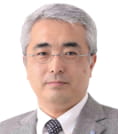- JST Home
- /
- Strategic Basic Research Programs
- /
 CREST
CREST- /
- Research Director/
- Spatiotemporal dynamics of intracellular components/
- [Cell Dynamics] Year Started : 2020
[Cell Dynamics] Year Started : 2020
Genji Kurisu
Molecular basis for dynamic communication between the photosynthetic organelles, chloroplast and pyrenoid
Grant No.:JPMJCR20E1
Research Director
Genji Kurisu

Professor
Institue for Protein Research
The University of Osaka
Collaborator
| Yusuke Matsuda | Professor School of Biological and Environmental Sciences Kwansei Gakuin University |
Outline
In plants or algae, the thylakoid lumen of chloroplast is acidified under fluctuating strong light condition. In this project, we will determine the dynamic structural basis for the acidification (ΔpH formation) of the chloroplast thylakoid membrane lumen by NMR spectroscopy and molecular dynamics simulations and elucidate the structure-function relationship of the novel anion transporter in the thylakoid membrane that accelerates carbon fixation in pyrenoid by X-ray crystallography. Dynamic molecular basis of how the information on thylakoid membrane acidification is transmitted between the two photosynthetic organelles, chloroplasts and pyrenoid, will be revealed by integrated X-ray crystallography and cryo-electron microscopy.
Osamu Nureki
Atomic resolution dynamics of supramolecular complexes essential for cellular functions
Grant No.:JPMJCR20E2
Research Director
Osamu Nureki

Professor
Garaduate school of Science
The University of Tokyo
Collaborator
| Yasushi Okada | Professor Garaduate school of Medicine The University of Tokyo |
| Kayo Nozawa | Associate Professor School of Life Science and Technology Institute of Science Tokyo |
| Satoru Fujiyoshi | Assitant Professor School of Science Institute of Science Tokyo |
Outline
We will elucidate in-cell real-time dynamic molecular mechanisms of how Prestin causes cell motility for acoustic amplification and of how SID membrane protein translocates RNA to cause RNautophagy by technical integrations of a single molecular analysis and an electron tomography of Cryo-EM (Nureki G.), of a sngle cell analysis and super-resolving microscopy (Okada G.) and of Cryo-fluorescent microscopy (Okada G.).
Nobuo Noda
Autophagy dynamics driven by multi-level higher-order structural components
Grant No.:JPMJCR20E3
Research Director
Nobuo Noda

Professor, Institute for Genetic Medicine, Hokkaido University
/Specially Appointed Researcher, Institute of Microbial Chemistry, Microbial Chemistry Research Foundation
Collaborator
| Kuninori Suzuki | Associate professor Graduate School of Frontier Sciences The University of Tokyo |
Outline
Autophagy is a basic life phenomenon that promotes recycling of intracellular components through degradation and is essential for us to lead healthy lives. During autophagy, complicated reorganization of lipid membranes occurs in cells, which is mediated by higher-order structural components that include supramolecular complexes, organelles, and membrane-less organelles. However, the molecular mechanisms underlying these events remain to be elucidated. In this project, we try to elucidate the molecular mechanisms of autophagy by reconstituting autophagic processes in vitro using requisite minimum components and analyzing the simplified processes.
Yasunori Hayashi
Spatiotemporal dynamics of synaptic nanostructure underlying memory
Grant No.:JPMJCR20E4
Research Director
Yasunori Hayashi

Professor
Graduage School of Medicine
Kyoto University
Collaborator
| Hidetoshi Urakubo | Associate Professor School of Medicine Fujita Health University |
| Kohei Otomo | Associate Professor (concurrent post) Exploratory Research Center on Life and Living Systems National Institute of Natural Sciences |
| Takeharu Nagai | Professor SANKEN (The Institute of Scientific and Industrial Research) The University of Osaka |
| Tomoki Matsuda | Professor School of Science Kitasato University |
| Kohei Otomo | Associate Professor Graduate School of Medicine Juntendo University |
Outline
We found that Ca2+/calmodulin protein kinase II (CaMKII) undergoes liquid liquid phase separation (LLPS) with its substrate proteins in a manner requiring Ca2+. We hypothesized that this process reorganizes PSD, thereby underlying synaptic plasticity. We will investigate this property with purified proteins and, in parallel, test the hypothesis through a combination of super resolution microscopy, development of tools for optical control of LLPS, and mathematical modeling.
Tetsuya Higashiyama
Whole-Cell Dynamics of Membrane Traffic Driving Chemotropism
Grant No.:JPMJCR20E5
Research Director
Tetsuya Higashiyama

Professor
Graduate School of Science
The University of Tokyo
Collaborator
| Kazuho Ikeda | Lecturer Graduate School of Medicine The University of Tokyo |
| Tomohiro Uemura | Professor Faculty of Core Research Ochanomizu University |
| Kazuo Ebine | Associate Professor Graduate School of Science and Engineering Saitama University |
| Yoko Mizuta | Assistant professor Institute of Transformative Bio-Molecules Nagoya University |
Outline
We aim to develop microscopes that enable whole-cell, super-resolution imaging of membrane traffic dynamics at the resolution of a single vesicle. By using the pollen tube of flowering plants as a model, we will reveal the mechanism of membrane traffic for precise chemotropism, through two cutting-edge approaches: identification of cargo and traffic machineries on each vesicle, and visualization of 3D dynamics of the membrane traffic in pollen tube attraction.
Tetsuro Hirose
Principles to build functional membraneless organelles with RNA
Grant No.:JPMJCR20E6
Research Director
Tetsuro Hirose

Professor
Graduate School of Frontier Biosciences
The University of Osaka
Collaborator
| Shungo Adachi | Chief Research Institute National Cancer Center Japan Research Institute |
| Chikara Dohno | Associate Professor SANKEN The University of Osaka |
Outline
In eukaryotic cells, specific membraneless organelles utilize RNA as their structural skeleton. In this study, we attempt to identify the structural requirement for the proper functions of the membraneless organelles, which eventually lead to understand the significance of RNA in the architecture of the memberaneless organelles. To accomplish the goal, we employ super-resolution imaging to observe the fine structure and physical properties, proteomics of the components, and theoretical approach with soft matter physics, all of which would promote to understand the relationship between the structure and the function of the membraneless organelles with RNA. We also attempt to develop the new technology to artificially manipulate the membraneless organelles with small compounds that directly interact with RNA.













